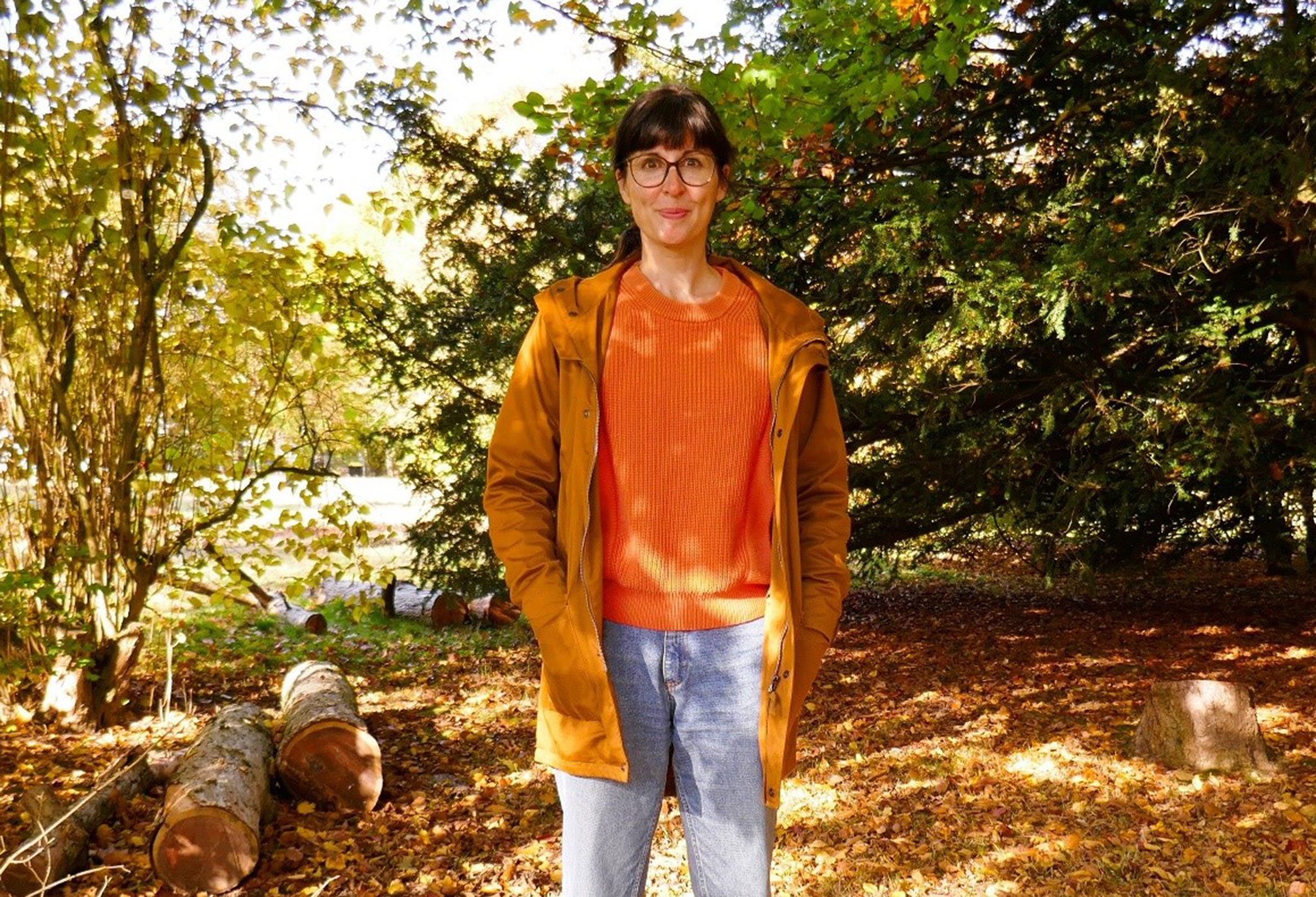Face of the LIB: France Gimnich
„I see an invaluable benefit for everyone in living in a nature-positive way,
not just for future generations.”
 © LIB, F. Gimnich
© LIB, F. Gimnich
For France Gimnich, art and science, life and research, politics and personal responsibility belong together. With the InUrFaCE street art project “Art meets Biodiversity”, she wants to raise awareness of nature issues among people who don’t go to museums. As collection manager of the biobank at Museum Koenig Bonn, she makes molecular samples accessible to current and future generations of researchers.
What led you to biology?
I actually wanted to know why we exist and study philosophy. But when I realized that instead of answers, I would only have more questions, I decided to study biology – in the hope that knowing how life works would bring me a little closer to the question of why.
What does nature mean to you personally?
For me, nature means truth and is therefore the most authentic thing I can encounter. It therefore has a very calming effect on me. Even as a child, I felt more comfortable with animals than with people. With them, it was clear where I stood.
What motivates you in your work?
The greatest motivation for my work in the biobank is its meaningfulness. During my collecting trips, I always had the utmost respect for taking animals from nature. Even though collecting is necessary because you can only protect what you know, I asked myself whether the benefits of my research justified the intervention. Now that these samples are in the biobank, I no longer have any concerns about this. By storing samples there, making them visible worldwide and available for future research, we are making sustainable use of these valuable resources.
What is the biggest challenge for you in the field of environmental protection?
That people do not feel their personal connection to nature and the significance of its loss. Far too few are aware of their own responsibility, but also of the added value of the necessary change. I see an invaluable benefit for everyone in living in a nature-positive way, not just for future generations. Another problem is the misconception that politicians have to take the first step. Without clear support from the population, politicians cannot achieve anything in the long term. I miss the outrage about the current situation and the courage to change.
How are you personally involved in this?
To help create a personal connection to nature, I founded the InUrFaCE association with a former colleague and my partner. We bring together street artists and biodiversity scientists to jointly develop motifs for large-scale painted facades that jump “in your face”. In this way, we want to get out of the bubble, onto the street and address people in public spaces who don’t go to museums. The idea is to use art to generate positive emotions about nature and increase the appreciation of biodiversity in society. One mural has already been created in the city center of Bonn and we are currently working on the design of the UN Campus train station. Next, we are looking for a mural in Hamburg.
What is the role of science in the LIB for you?
We have a social responsibility and, given the current situation, we are under great pressure. I would like us to closely interlink basic and applied research in order to create pragmatic solutions for biodiversity conservation. These should be implemented in close cooperation and on an equal footing with society, business and politics.
What do you want people to associate with the LIB in ten years’ time?
The LIB should be recognized as a central player in shaping a future worth living for all. A reliable, trustworthy point of contact for business and politics. And, through our museums, also a meeting place for people with nature and citizens with scientists.
What does the Museum Koenig Bonn mean to you?
Since I started here as a student in 2008, the museum has become an important part of my life. Back then, we were, as Bernhard Misof once so aptly described it, like a young start-up company. A creative place where a pool of very different people researched with passion, networked and were brave enough to try out new things together. Although I was “only” a student, I already felt part of it back then. Even though we have grown enormously and everything has become more complex, this spirit is still in us. That makes the museum a great place to work for me.
France Gimnich studied biology at the University of Bonn and wrote her diploma thesis on the genetic differentiation between land snail populations at the Museum Koenig. She went to the Museum für Naturkunde Berlin for her doctorate and used molecular techniques to research the evolutionary history of Australian freshwater snails. After several positions as scientific coordinator in Berlin, Indonesia and Bonn, she has been the collection manager of the biobank at the Center for Molecular Biodiversity Research since 2018. In her free time, she combines science with art: https://www.art-meets-biodiversity.com


